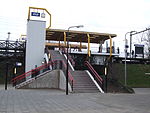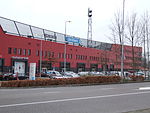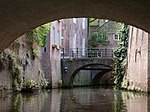Heroes Den Bosch
Basketball teams established in 1952Basketball teams in the NetherlandsDutch Basketball League teamsHeroes Den BoschIncomplete lists from June 2022 ... and 1 more
Sports clubs and teams in 's-Hertogenbosch
Heroes Den Bosch is a Dutch professional basketball club based in 's-Hertogenbosch. The club plays in the BNXT League since 2021 and in the top basketball division in the Netherlands since 1972. Founded as EBBC in 1951, the club had several sponsored names the following decades. Den Bosch has won a record seventeen Dutch championships, seven Dutch Cup and two Dutch Supercup titles. The team has also been a regular at European competitions, most recently the FIBA Europe Cup. Heroes plays their home games at the Maaspoort, which has a capacity of approximately 2,700 people.
Excerpt from the Wikipedia article Heroes Den Bosch (License: CC BY-SA 3.0, Authors).Heroes Den Bosch
Marathonloop, 's-Hertogenbosch Empel
Geographical coordinates (GPS) Address Website Nearby Places Show on map
Geographical coordinates (GPS)
| Latitude | Longitude |
|---|---|
| N 51.722677777778 ° | E 5.3155194444444 ° |
Address
Maaspoort Sports & Events
Marathonloop
5235 AB 's-Hertogenbosch, Empel
North Brabant, Netherlands
Open on Google Maps











